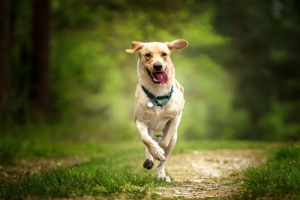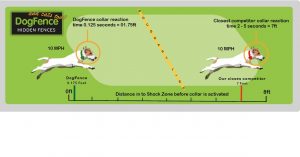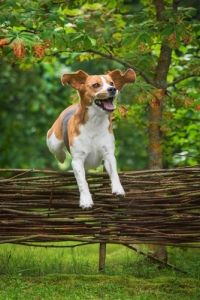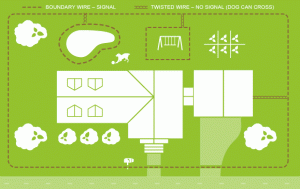How to Stop My Dog Running Away – A Complete Guide
How to Stop My Dog Running Away
One of the most common Google searches is “How to Stop My Dog Running Away” so you are not alone and it is a very common but solvable issue.
Picture this: Max is pawing at the door to go out. You open the door, and in a flash, he is off down the road. Your heart races, your voice strains calling him back, and you wonder—why do they keep doing this? Or maybe he’s been playing quite happily in the garden and you go to call him in and he’s gone. Once, he’s found that outside world there’s no stopping him and this becomes a regular occurrence. It’s little wonder that one of the most popular google searches is “how to stop my dog running away”!.
A dog running away is a frustrating and, more importantly, a dangerous behaviour. Not only can they cause

Common Google Search “How to stop my dog running away”
harm to themselves, the public but a loose dog can have an extremely detrimental affect on the local wildlife. But don’t worry; there are practical solutions that can keep your canine friend safe. Indeed the UK law states that your dog must be under control in a public place and the fine for breaking such an offence can be up to £5000 or 6 months in prison. So keeping our canine friends safe but free is not a luxury it is a priority.
In this guide, we’ll look at why dogs run away, share areal-life story, and offer proven strategies to help you stop this behaviour once and for all.
Why Do Dogs Run Away?
Dogs are natural explorers, and running away often stems from their instincts or unmet needs. Let’s dive deeper into the common reasons:
- Curiosity: Dogs love exploring the world with their noses. If your dog catches an interesting scent, it can be almost impossible for them to resist.
- Boredom: Imagine being cooped up all day with nothing to do. Your dog may bolt simply for excitement.
- Fear or Anxiety: Loud noises like fireworks, thunderstorms, or even a car backfiring can trigger a “flight” response.
- Chasing Instincts: Whether it’s a squirrel, rabbit, or car, some dogs have a high prey drive that can send them racing away.
- Seeking a Mate: Unneutered dogs, driven by natural urges, may roam in search of a partner.
Real-Life Story: Max’s Adventure
Max, a lively Lab from Hampshire, had a habit of escaping from the garden. His owners spent hours blocking up holes and searching for his

Quick Pint before I get taken home!
escape routes but to no avail. He was a typical Lab and loved his food. He was drawn to the local pub garden where he was always rewarded with a tasty snack! One day, on one of his escapes he ran and onto a busy road, narrowly avoiding an accident and being picked up and taken to the local Vets. His owner, said, “I thought I’d never see him again.” Although his behaviour had been frustrating they hadn’t been too concerned as they always knew where his journey took him. After this incident, and a quick google, they found DogFence and duly installed an electronic dog fence to keep Max at home. To this day Max has stayed home and an added bonus for Max’s health has been the weight loss of 3kg as he is no longer topping up on left over chips and pub grub!
Top 6 Solutions to Stop Your Dog Running Away
To tackle this issue, you need a combination of training, management, and tools. Here’s how:
1. Provide Regular Exercise and Mental Stimulation
Dogs with pent-up energy are more likely to escape. Keep your dog happy and tired with:
- Physical Activities: Daily walks, hikes, or even agility courses.
- Brain Games: Puzzle feeders, hide-and-seek, or scent games can keep their minds engaged.
- Social Interaction: Regular playdates with other dogs can reduce their urge to wander.
2. Create a Secure Outdoor Environment
Check for escape routes:
- Fences: Regularly inspect your fence for gaps, loose boards, or areas where your dog might dig.
- Gates: Ensure gates are always locked and secure. Consider adding self-closing mechanisms.
- Hidden Electronic Fences: A more advanced option for properties with open landscapes, these fences are invisible but highly effective and also cover driveways negating the fear of “open” gates.
3. Train a Reliable Recall Command
Training is a lifesaver. Teach your dog to respond to a recall word like “come” or “here”:
- Start in a distraction-free area and reward them with their favorite treat or toy.
- Gradually increase the difficulty by practicing outdoors and around mild distractions.
- Never punish your dog if they don’t come immediately—this will discourage them from returning next time.
4. Address Triggers That Cause Escaping
Does your dog flee during fireworks? Or when left alone?
- Fearful Dogs: Try desensitisation training and provide a quiet, safe space indoors.
- Separation Anxiety: Leave them with a special toy or a piece of your clothing for comfort.
- Professional Help: If their anxiety is severe, a behaviourist can work wonders.
5. Spay or Neuter Your Dog
This simple step can significantly reduce the urge to roam, especially in male dogs. Plus, it has health benefits too!
6. Install an Electronic Dog Fence
For rural homes or large properties, a containment system like DogFence is a game-changer. Unlike traditional fences, electronic fences:
- Can be installed on any terrain up to 350 acres.
- Are tailored to your dog’s personality and training needs.
- Affordable compared to traditional fencing
- Cover driveways and gateways
- Work for cats t00!
Why Choose DogFence to stop my dog running away?
Frequently Asked Questions
Q: How long does it take for my dog to learn their boundaries?
A: Most dogs adapt within 1 week of training, which is included with our systems.
Q: What happens if my dog crosses the boundary?

Visible boundary for the pet with flags.
A: Our system provides a warning tone before a gentle correction, encouraging your dog to stay within safe limits. Training is the key and dogs who have been correctly trained should not cross the boundary. Our Systems come with a “Containment Promise”.
Q: Is this system portable?
A: Yes, if you move to a new property, the system can be reinstalled and tailored to your new space.
Q: How does my dog know where the invisible fence is?
A: A series of white training flags are installed temporarily around the boundary, these are removed gradually after 2 weeks.
Q: Will an electronic dog fence hurt my pet?
A: No, our systems use gentle correction tailored to your dog’s temperament.
Q: Can I install the system myself?
A: Yes, we offer a self-installation package with step-by-step guidance.
Q: Is this system suitable for cats?
A: Absolutely! Our system works for both dogs and cats.
For more FAQ’s read here.
What are customers say:
“This company are top rank. They quoted over the phone, a gentleman came and installed the cable around a large area and trained the wayward dog to beware it. He was excellent with all our four dogs and extremely nice and helpful – he had also come a long way to install our system – in Cornwall. Since then the fence has worked fantastically with the dog hearing the audible warning and as far as we know has never even been “zapped” such was the excellent training given by the installer. All in all a truly excellent experience, superlatives fail me.”
(Google: Edward Trewhella)
Conclusion: Take Action Today
Keeping your dog safe doesn’t have to be a constant worry. By addressing their needs and using tools like DogFence’s electronic containment system, you can enjoy peace of mind knowing your best friend is secure.
Call us Today
Are you ready to keep your dog safe at home? Contact DogFence today for a free consultation and discover the best solution for your pet.
Our office team can provide you with a same day quotation and have your dog fence up and installed within 2 weeks. Imagine knowing that your dog or cat is safe but free to enjoy your outdoor space. Call us on tel:01628476475
Get a Quote Here.





















 disturbance to your perimeter boundary.
disturbance to your perimeter boundary.





 collars are not only the smallest and lightest worldwide among standard wired systems but also significantly lighter and less bulky than Geo collars. While our lightweight collar weighs less than 40g, including the battery, a typical Geo collar weighs around 227g. The average battery life on our mini collar = 6 months and on our standard collar = 2 years, whereas the run time on a Geo Collar = 36 hours (8 hours tracking). The extra weight of a Geo collar is due to the hardware required to connect with orbital satellites, making it inherently larger and heavier. In terms of warranty, Geo collars come with a one-year warranty that doesn’t cover accidental damage. In contrast, our DogWatch collars come with a lifetime warranty, even covering damage from dog chews
collars are not only the smallest and lightest worldwide among standard wired systems but also significantly lighter and less bulky than Geo collars. While our lightweight collar weighs less than 40g, including the battery, a typical Geo collar weighs around 227g. The average battery life on our mini collar = 6 months and on our standard collar = 2 years, whereas the run time on a Geo Collar = 36 hours (8 hours tracking). The extra weight of a Geo collar is due to the hardware required to connect with orbital satellites, making it inherently larger and heavier. In terms of warranty, Geo collars come with a one-year warranty that doesn’t cover accidental damage. In contrast, our DogWatch collars come with a lifetime warranty, even covering damage from dog chews

